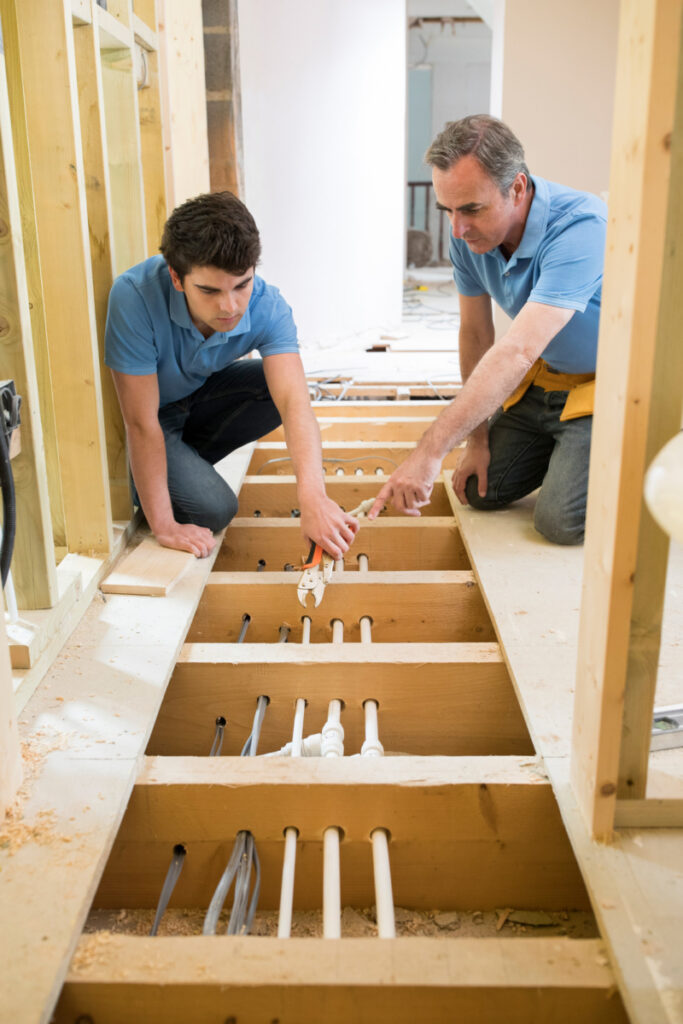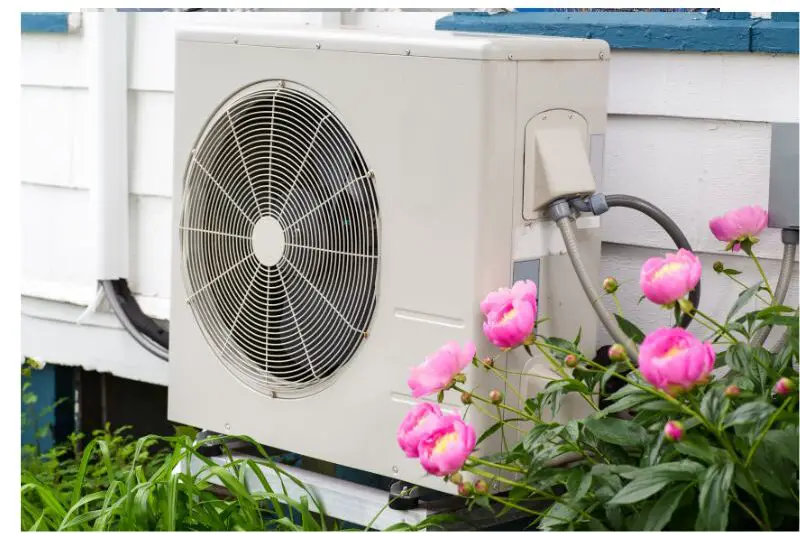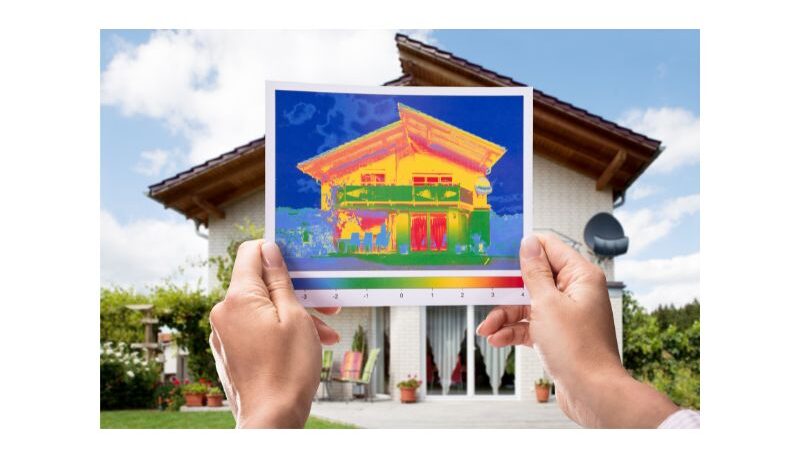Air source heat pumps (ASHP) are in the media more and more nowadays. The impact they could have on this country’s energy needs and carbon footprint is substantial. They certainly have many benefits, and we have explained them in a previous article. But not everyone agrees on how much they will help heat our homes and clean up energy in the future. Here, we will look at their disadvantages and problems.
Disadvantages of Air Source Heat Pumps
Air source heat pumps disadvantages include the high upfront cost to install and the lower heat output to the radiators. This means you will need bigger radiators in the room. If poorly installed, they don’t produce and distribute adequate heat, while also being noisy. They are also bulky and take up a lot of space outside the property.
See the advantages of air source heat pumps

Disadvantages of Air Source Heat Pumps
High installation costs
Air source heat pumps are more expensive to install than traditional gas boilers. The lower end upfront cost can still be above £9000. Even with government grants that are currently available of up to £5000, buying a heat pump will still be out of reach for many homes.
If you compare that to a gas combi boiler system at around £3200 installed, air source heat pumps aren’t exactly cheap.
Some of the high installation costs of these units include bigger pipe sizing, with many manufacturers requiring 28mm pipes to maintain flow rates through the system. Currently, with gas central heating, the majority of the pipework is 15mm with a few 22mm at most.

The outdoor unit can be an eyesore
To work most efficiently, the outdoor unit needs to be positioned so that the air flows into an open area. Plus they shouldn’t be too near plants and bushes, or on pathways where pets regularly walk. All these limit where the unit can be placed.
ASHP may not be suitable in coastal areas because of the sea breeze that can cause corrosion to the outdoor unit. Manufacturers recommend for you to apply anti-corrosion coating over the unit.
You should be aware they need to be positioned where there is adequate drainage, because, at full flow, the outdoor unit can produce up to 6 litres/ hour of water.

Lower efficiency from ASHP during cold periods
Another key disadvantage of air source heat pumps is their inability to heat efficiently when it gets a few degrees below freezing. They simply don’t deliver the same level of heat that some homeowners expect at very low outside temperatures. This means you may require larger radiators in certain rooms. You can still heat your home but their efficiency starts to drop the colder it gets.
If you would like a constant radiator temperature this can be set by an engineer but it will increase your running costs by up to 25%.

When you compare this against a gas boiler, it doesn’t matter how cold it gets outside, the efficiency of the boiler remains constant, because the fuel source isn’t lessened.
This is why underfloor heating is recommended with ASHP. It covers a larger area of the room all getting equal, if somewhat lower, heat distribution.
High running cost of air source heat pumps
Running costs on top of the initial cost could be another disadvantage of air source heat pumps. If replacing a gas boiler, an ASHP may actually cost more to run because the cost of a kWh of gas is cheaper (currently) than a kWh of electricity.
In terms of running costs, an air source heat pump will be better if replacing an electric heater rather than gas.
Air source heat pumps need to be left switched on all the time so they can calculate or sense when the heating needs to come on inside the house. This also means, they can come on at any time of the night, which can be noisy if not maintained properly.
The Centre for Alternative Technology has more information on the running costs of ASHP compared to electric and gas fuels.
They won’t save energy if not installed in the right place
It is very important the ASHP system is installed correctly after careful planning. If incorrectly installed, it can result in it being less efficient at heating your home than it should be. The length of pipe runs, size of radiators, and location of the unit all become more critical for heat pump systems, more so than gas combi boilers.
The main issue with this is the number of heat pump installers required to fit them in all the houses in the country that want them. A huge number of operatives are required and, if previous government projects are anything to go by, they will be just barely trained in fitting them.

They probably won’t be trained anywhere near enough to take other factors such as plumbing, heat loss or weather compensation into account.
Take up much more space
With two units installed, one outside and one indoors, plus increased radiator size and hot water storage tank, ASHP systems need a lot more space to work. Not all homes have the required space to put them. Heat pump outdoor units will use up patio, garden, or wall space.
A gas combi boiler can be hidden away in a kitchen cupboard and still provide heating and hot water for the family.
Homes need to be very well insulated already
New builds have all the required insulation built in and ASHP systems are installed in them just fine. The problem is that 80%+ of UK houses are older and have poor insulation. At lower running temperatures, heat pumps will need to be on all day to compensate for the heat loss.
This article from the Institute of Mechanical Engineers (IMechE) explains the difficulty of installing heat pumps in the UK housing stock.

They need to be commissioned correctly
If an ASHP is not commissioned properly and the difference in flow and return temperatures have not been set up right, it will cost more in electricity bills to keep the house warm. You also have an extra immersion heater type element within the control unit to ensure the stored water temperature stays above 60 degrees to prevent legionella poisoning. This will use extra electricity if the heating from the ASHP is not hot enough.
They are exposed to external factors
The outdoor unit with the compressor and fan is exposed to twigs, dust, leaves, grass, etc. This causes excess wear and tear and over time, if not regularly maintained, will be increasingly noisy. It could affect you or your neighbours, especially as they can come on all times of the day.
The pump itself is usually outside the building and the noise it emits can be annoying. In addition, the unit’s condensers emit cold air which can be a cold and drafty nuisance to occupants if exposed to vents.
You may have to change the plumbing in the house
The water storage temperature within the ASHP tank is lower – around 48C than a normal gas or oil powered cylinder. It’s important to check that any shower or bath mixers do not further reduce the water temperature. If the hot water coming out the tap isn’t the same temperature it leaves the cylinder, you might need to make adjustments to taps and mixers etc.
With air source heat pumps, you may not always get instant hot water, depending on the family size. The cylinder keeps hot water stored and heated all the time, but with more occupants using hot water constantly, the cylinder can take up to an hour to reheat from cold.
You may have to get planning permission
Most air source heat pumps do not require planning permission. But certain larger heat pumps will need to pass permission before being installed. Also, if installing in a listed building or a conservation area, you will need to check if it is allowed.
You can find more information on the Planning Portal page.
They are not as green as you might think
Heat pumps require electricity to run and in addition to electric vehicles, the country will need more and more electricity to run all these heat pumps. Will we have more power stations instead of fewer? When the wind stops blowing and the wind turbines don’t turn, the backup will need to be gas or nuclear power generation.
Summary
You should be aware of these disadvantages of air source heat pumps:
- High installation cost.
- They can’t be placed where you want.
- Lower efficiency during cold periods.
- High running costs.
- Won’t save energy if not installed in the right place.
- They take up much more space.
- Homes need to be very well insulated to benefit.
- They need to be commissioned correctly.
- They are exposed to external weather.
- You may have to change the plumbing in the house.
- You may require planning permission.
- They are not as green as you might think.
Read related articles:
